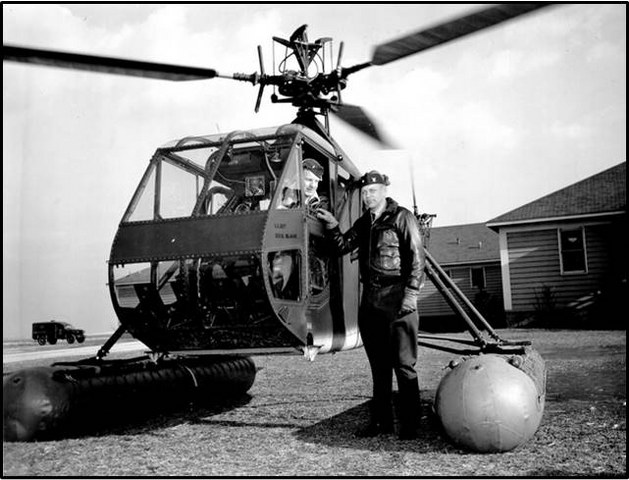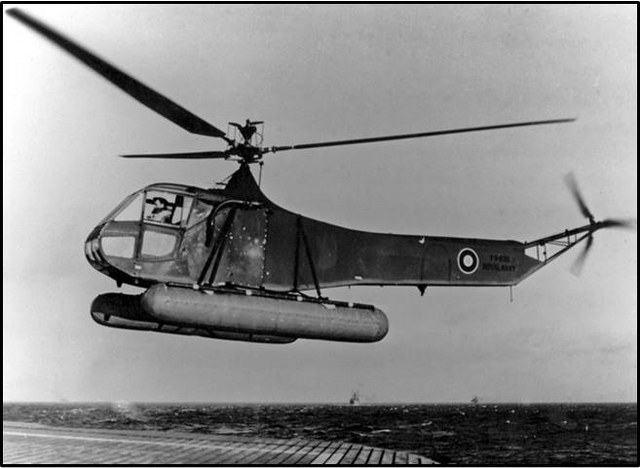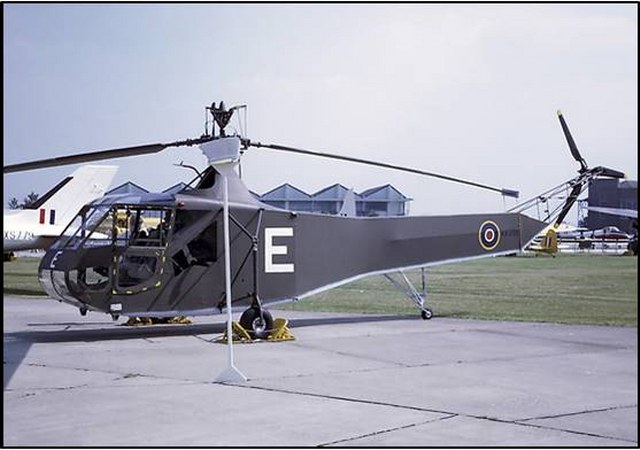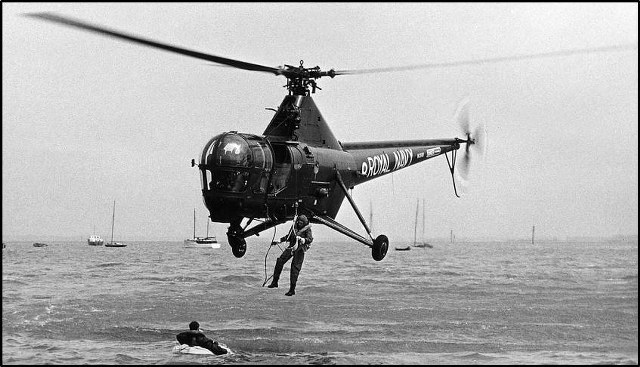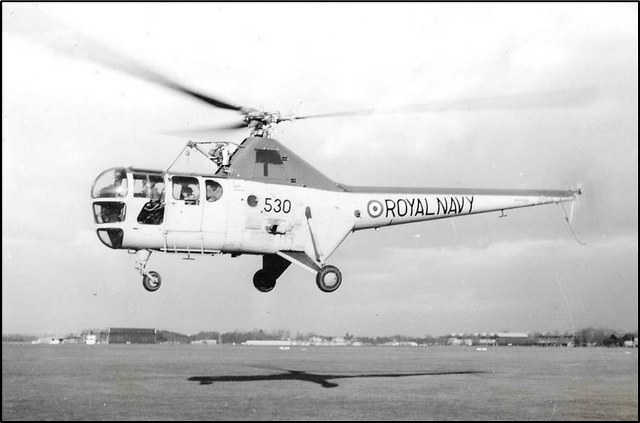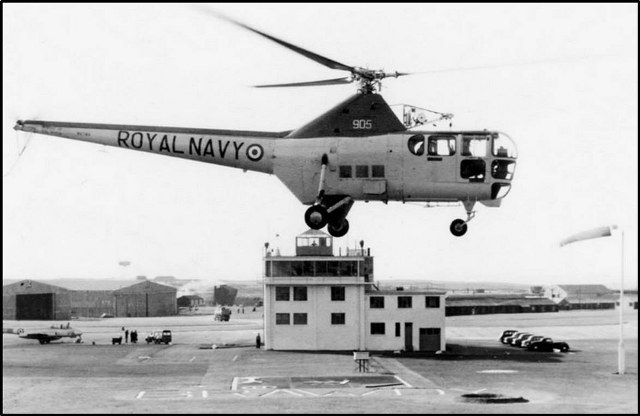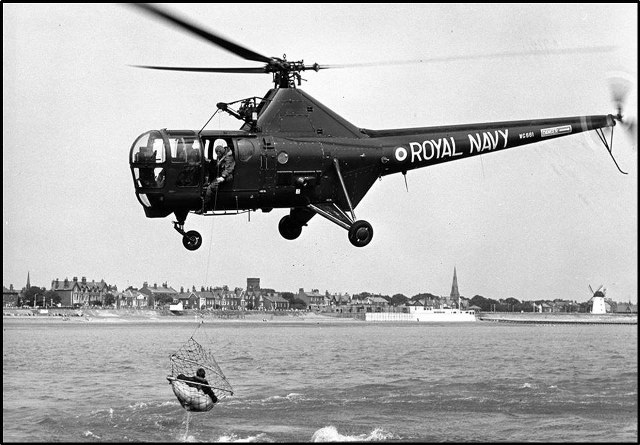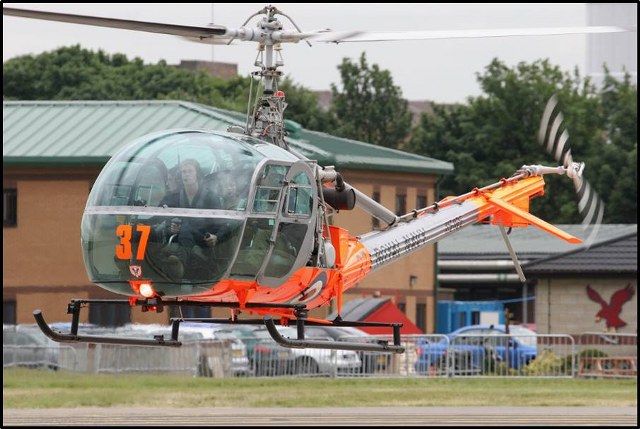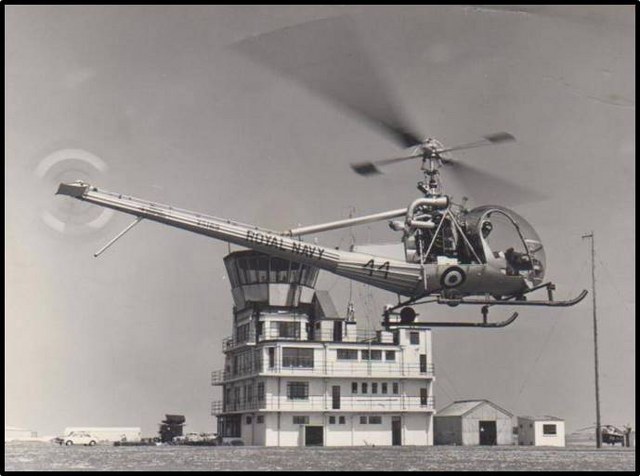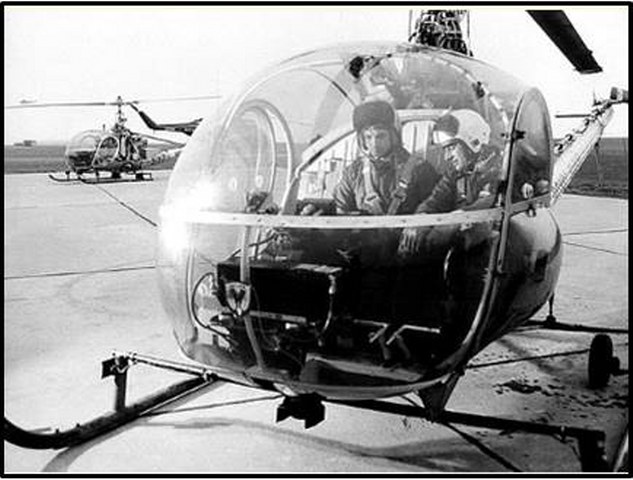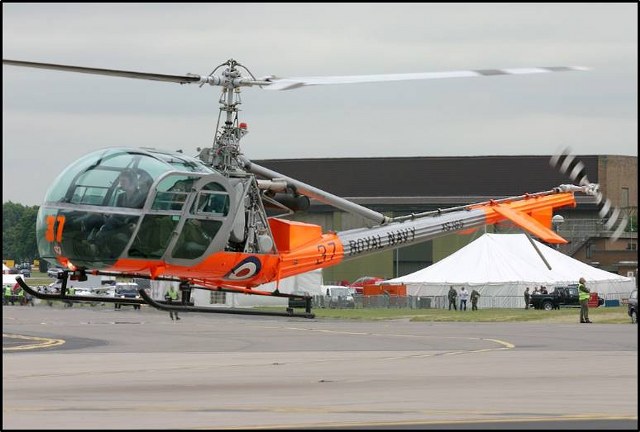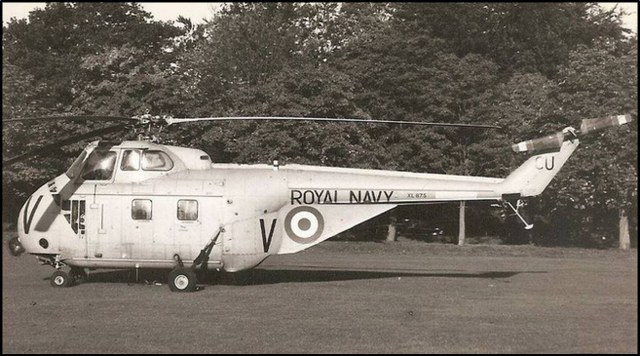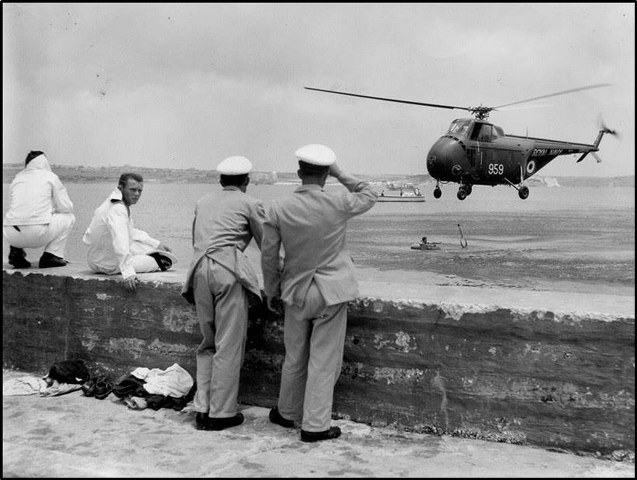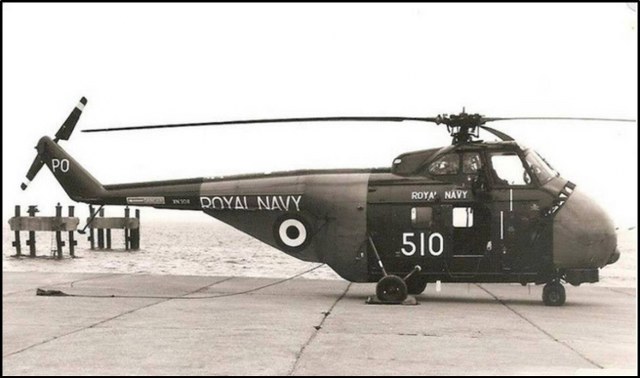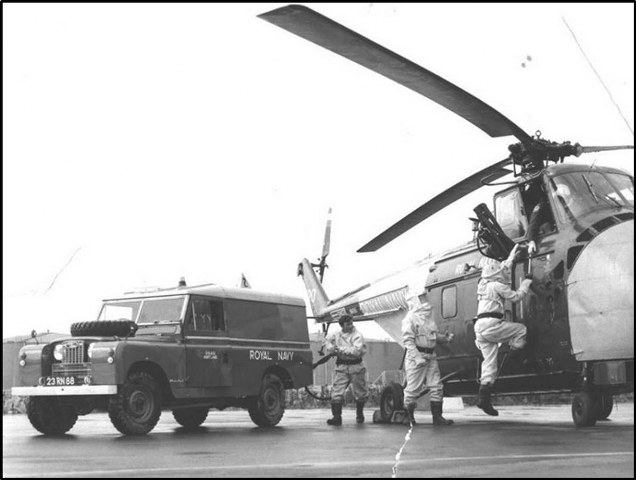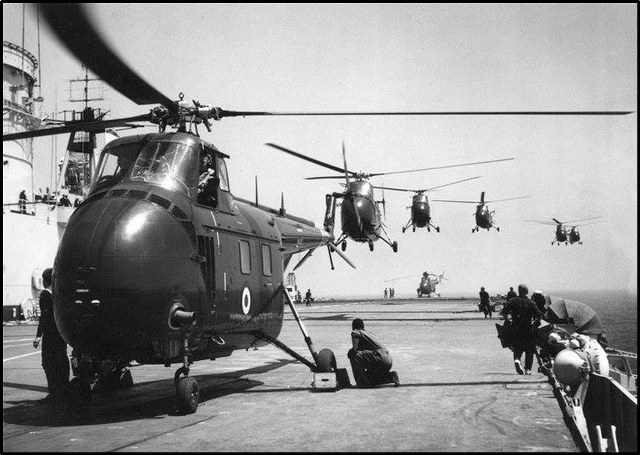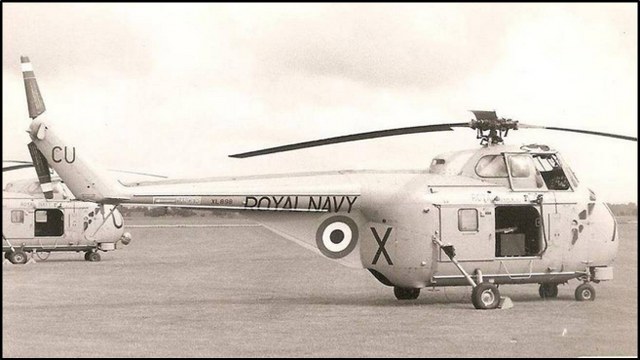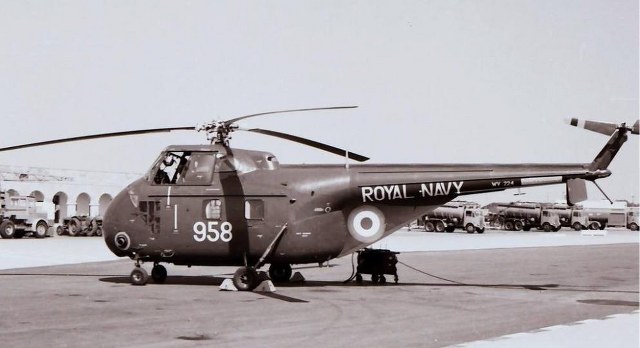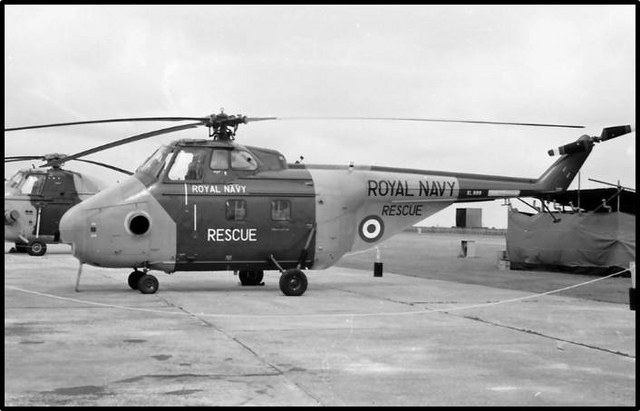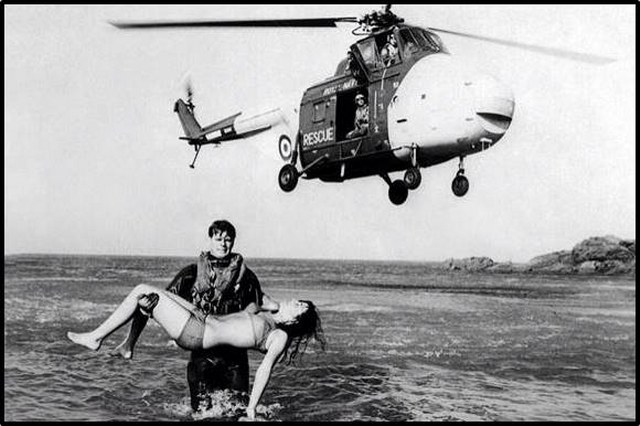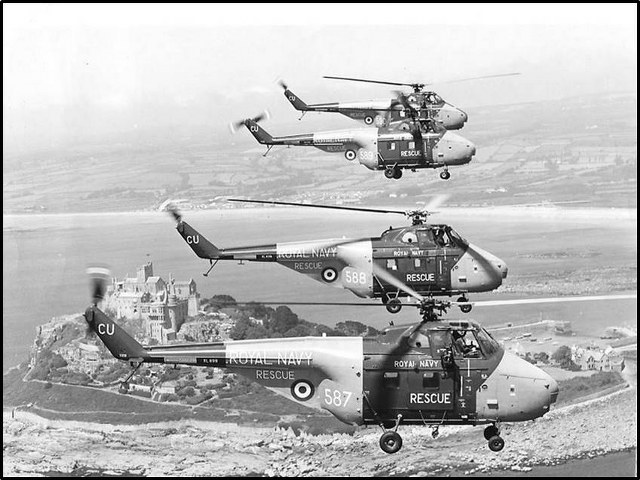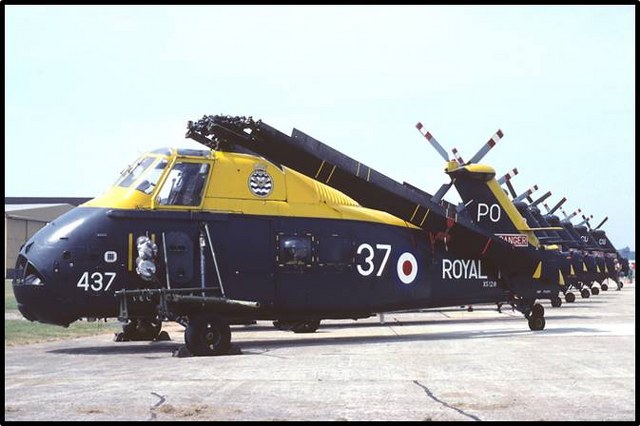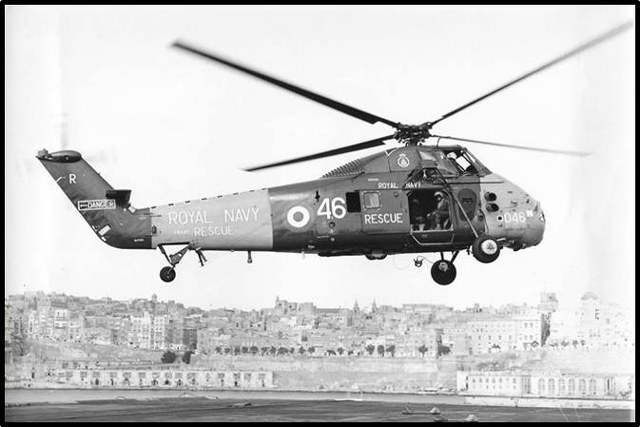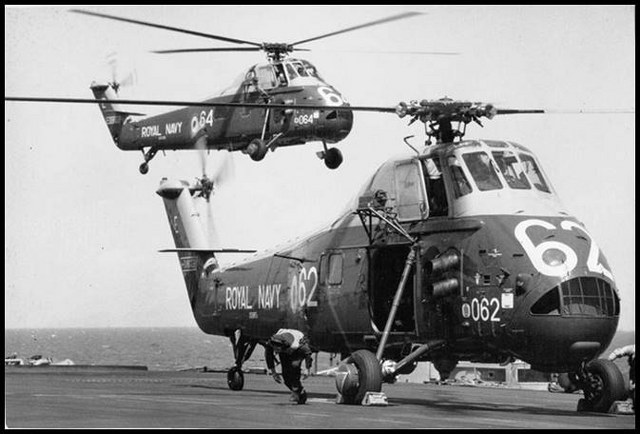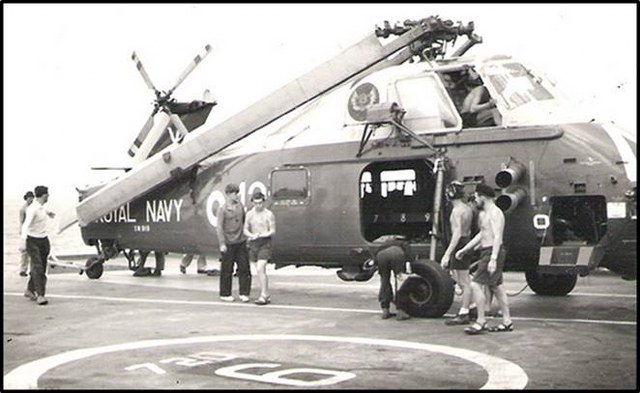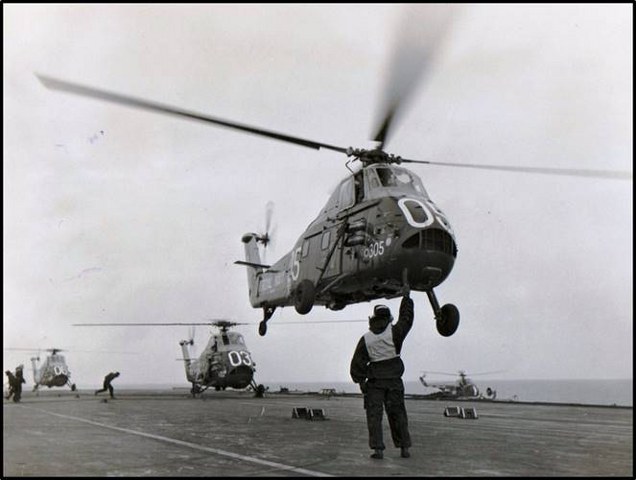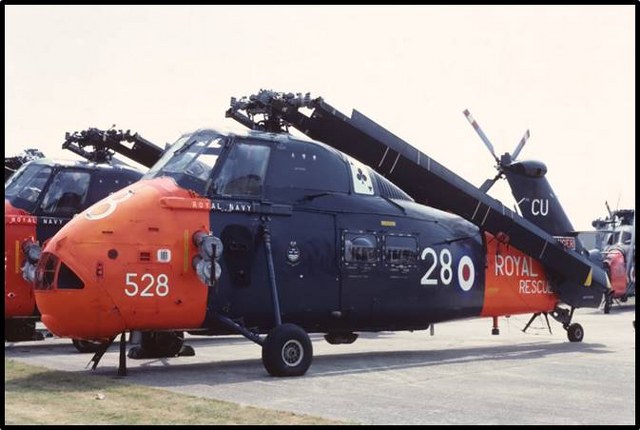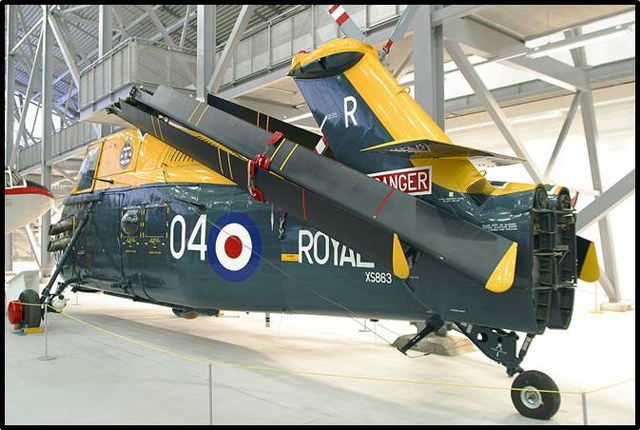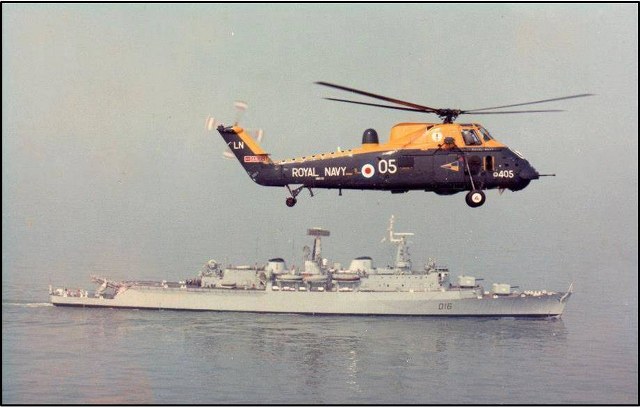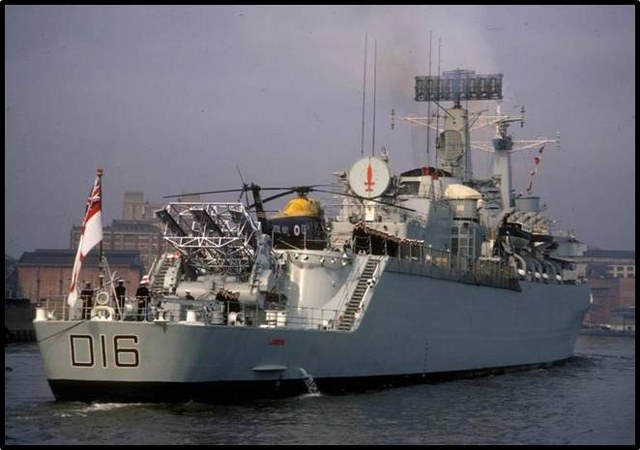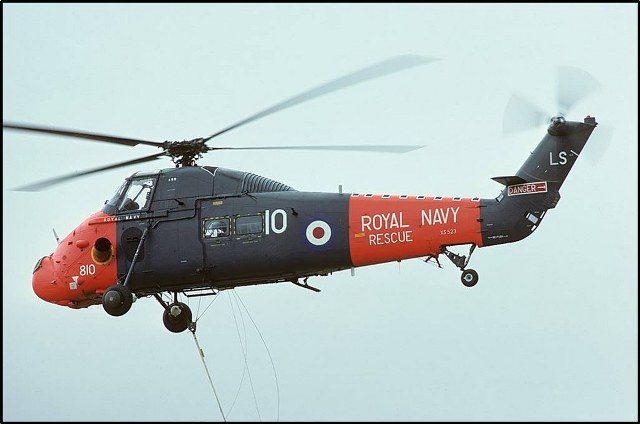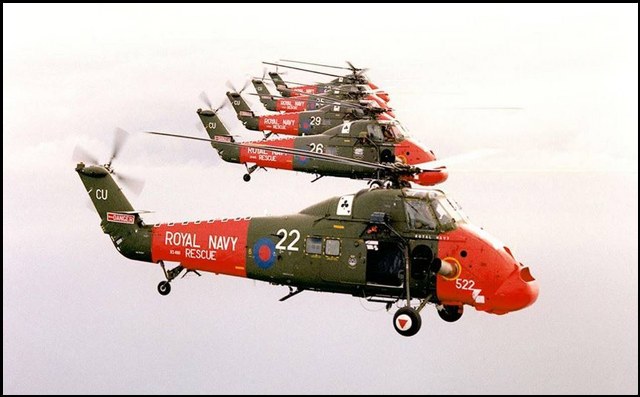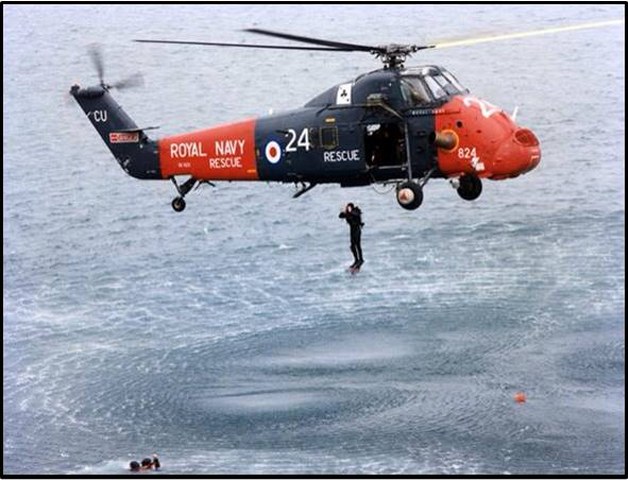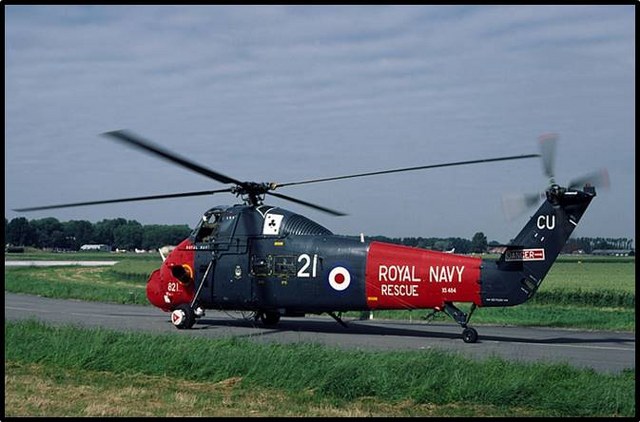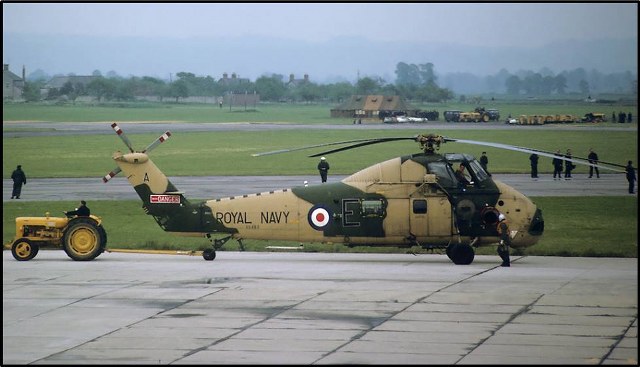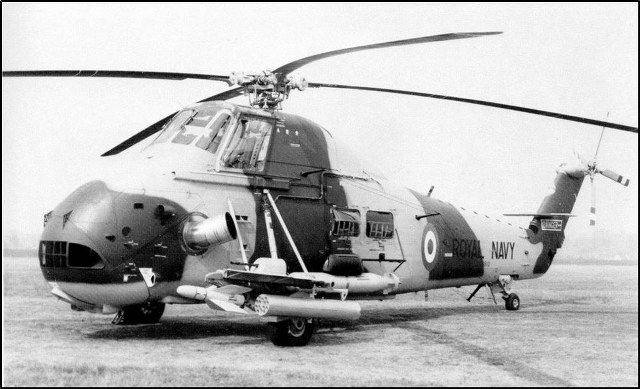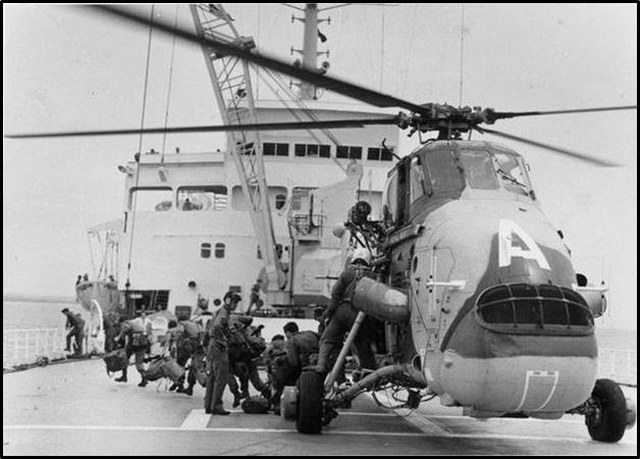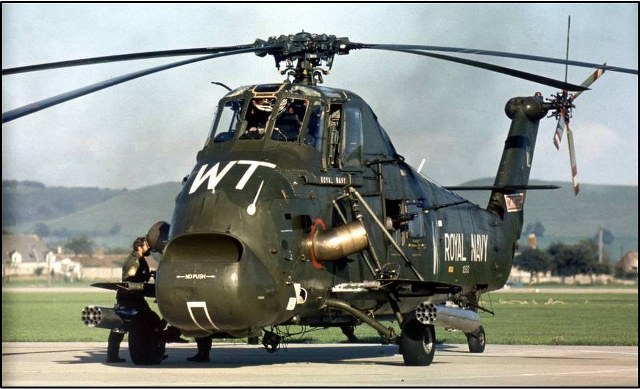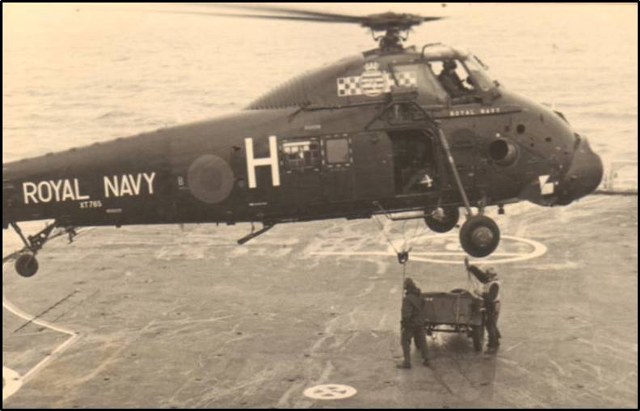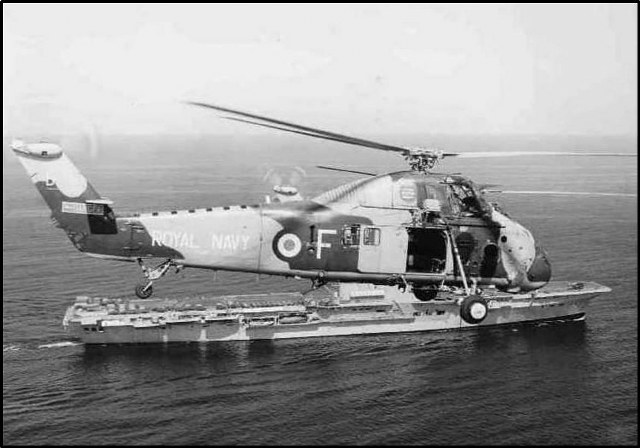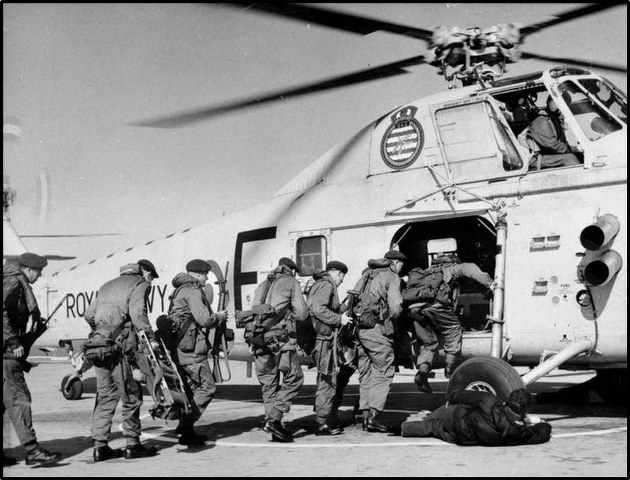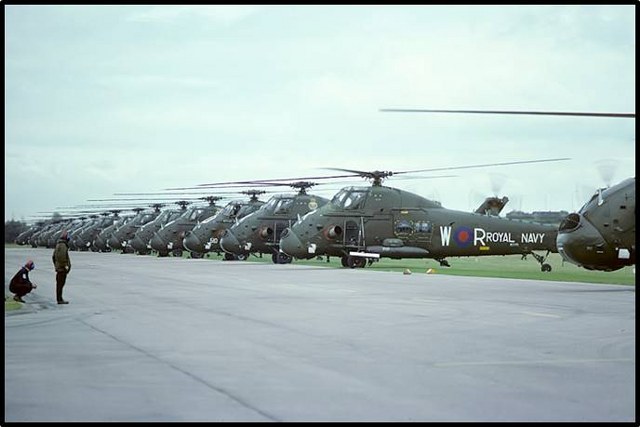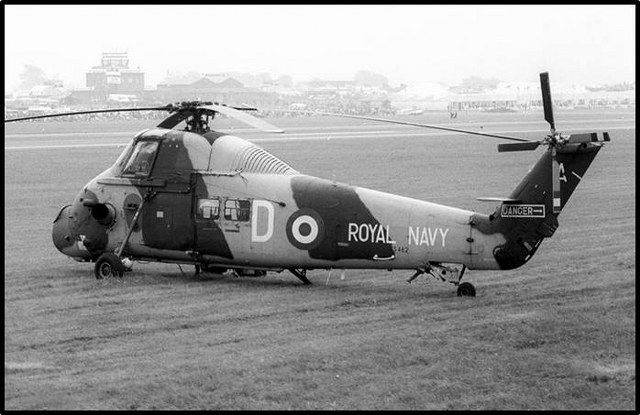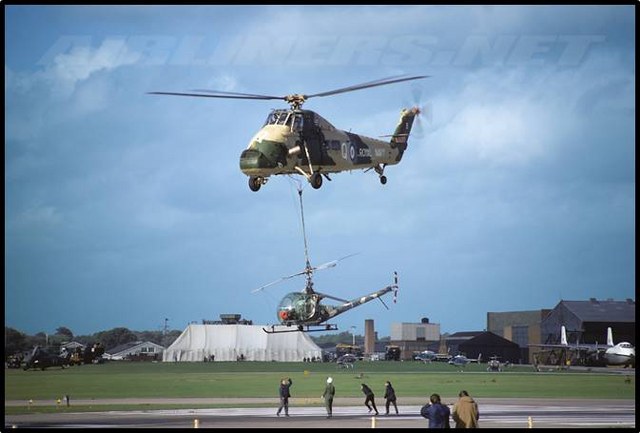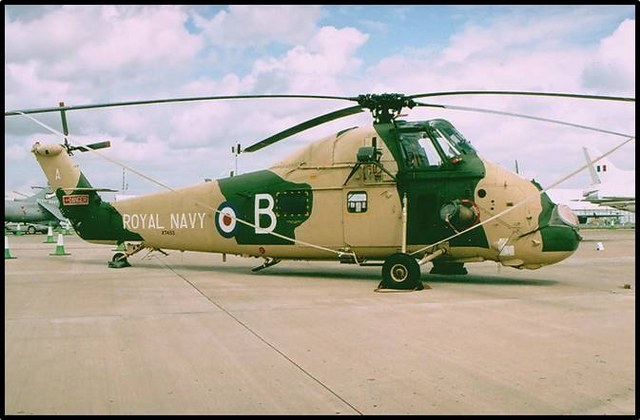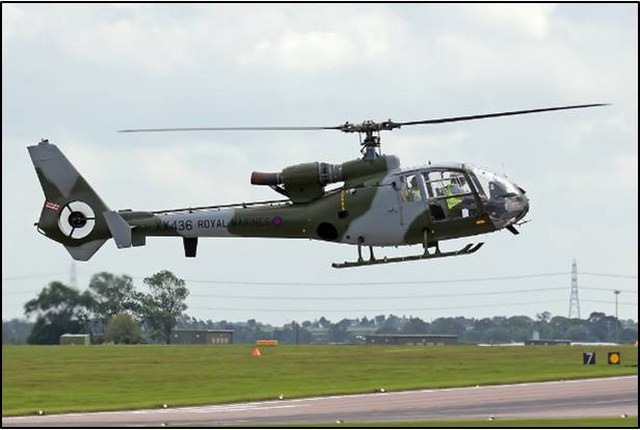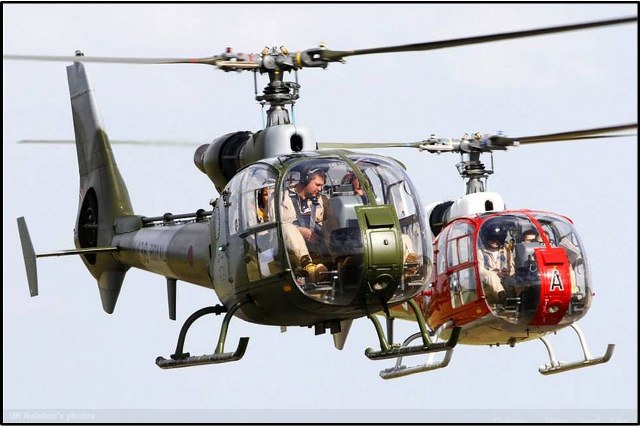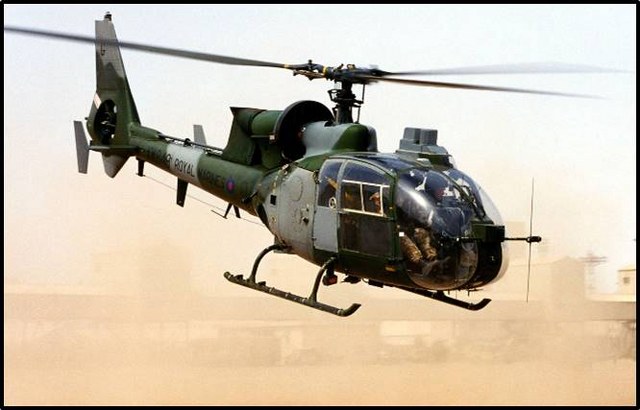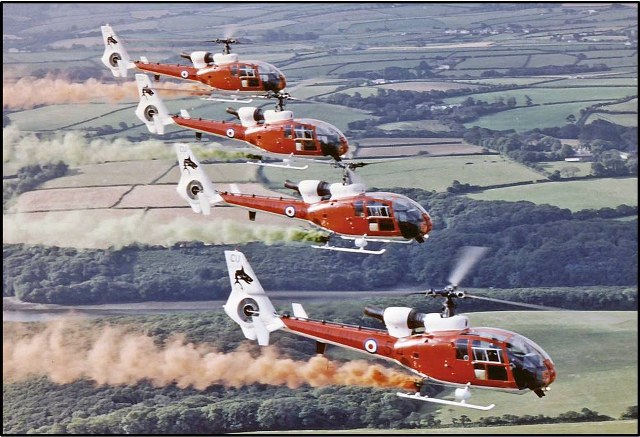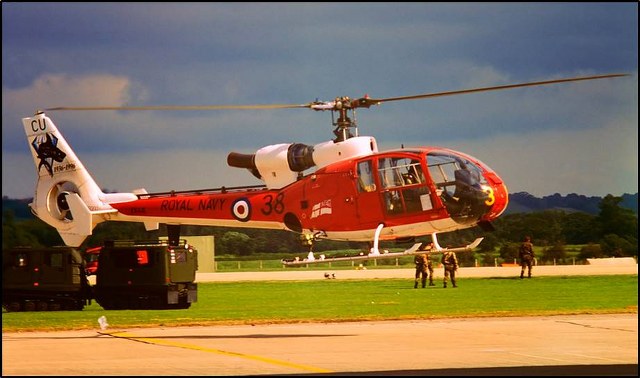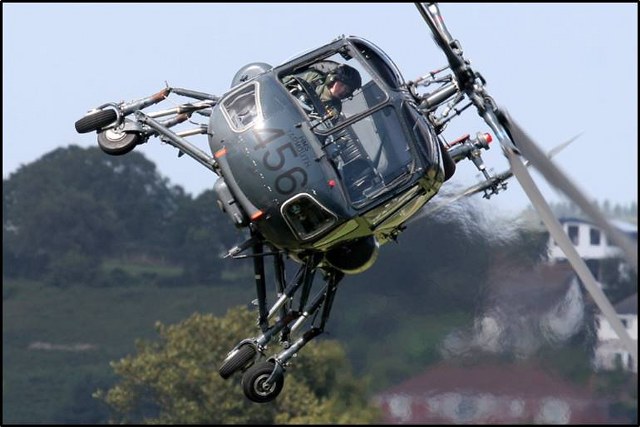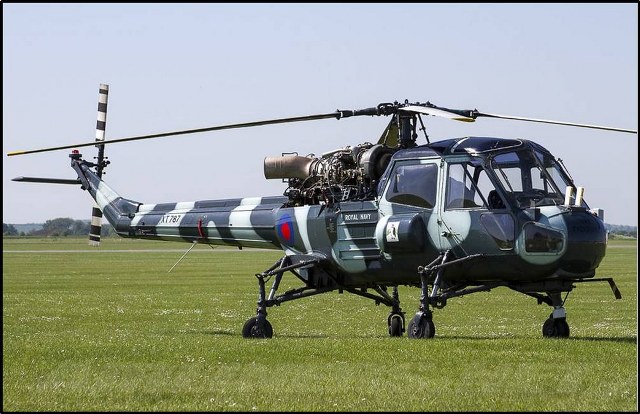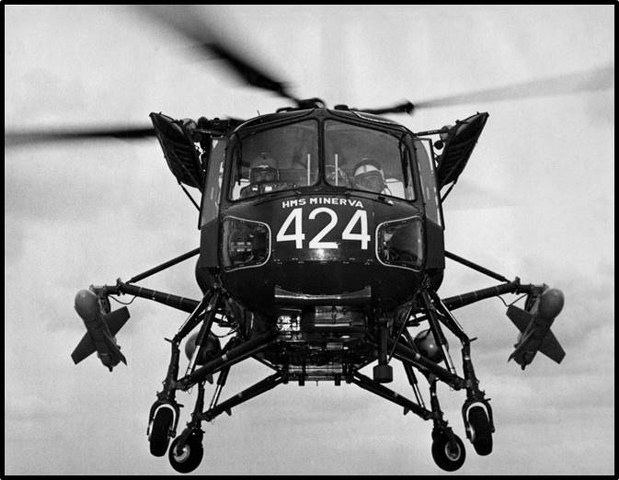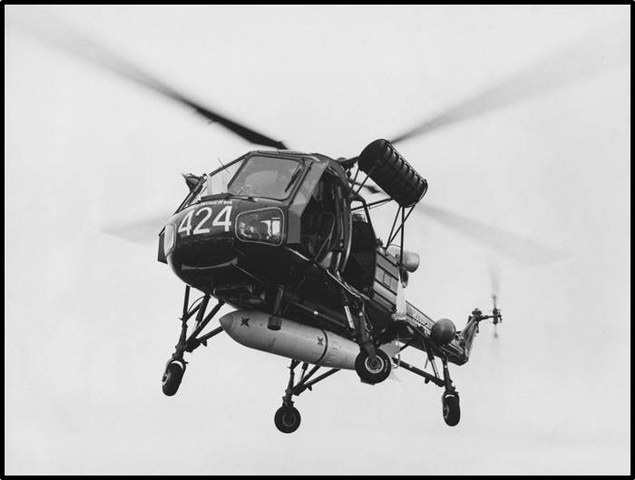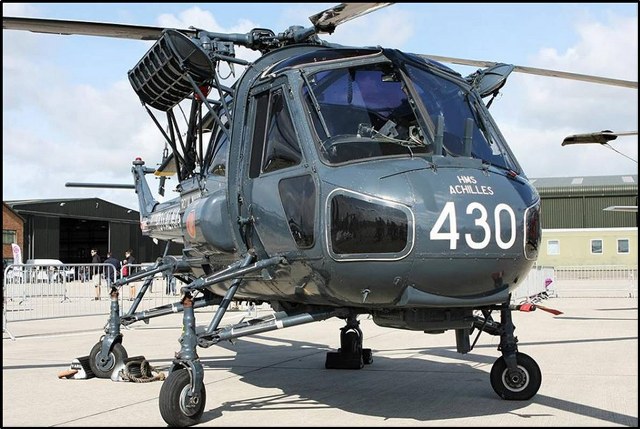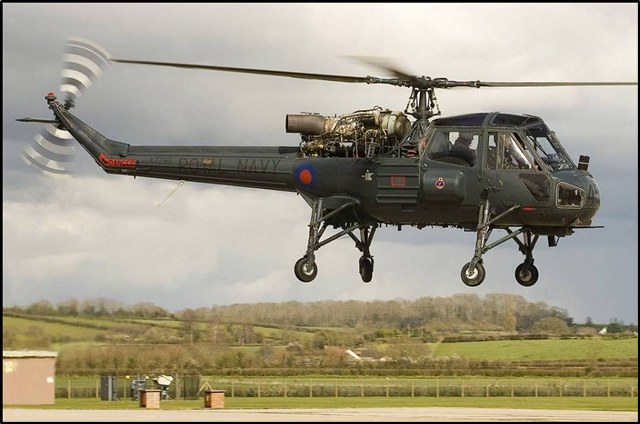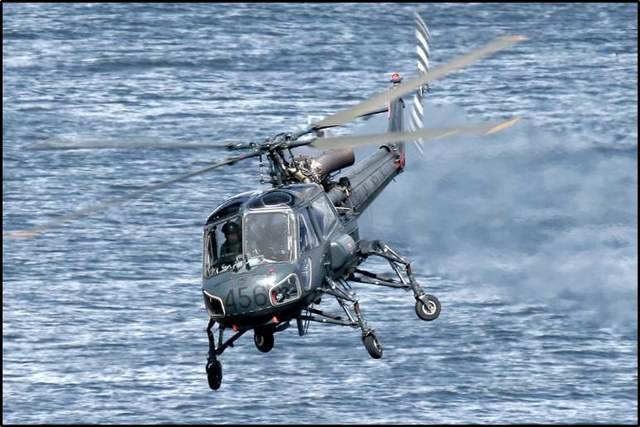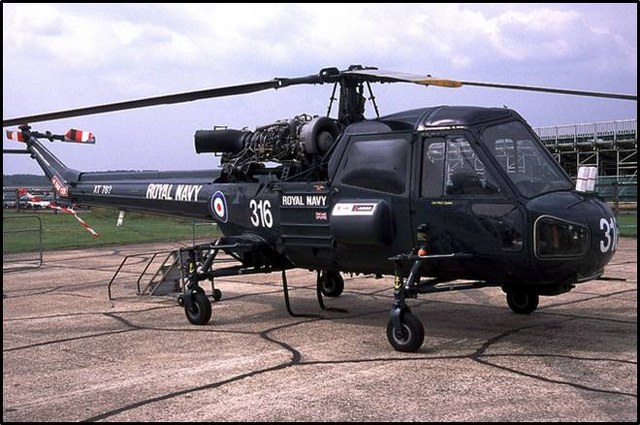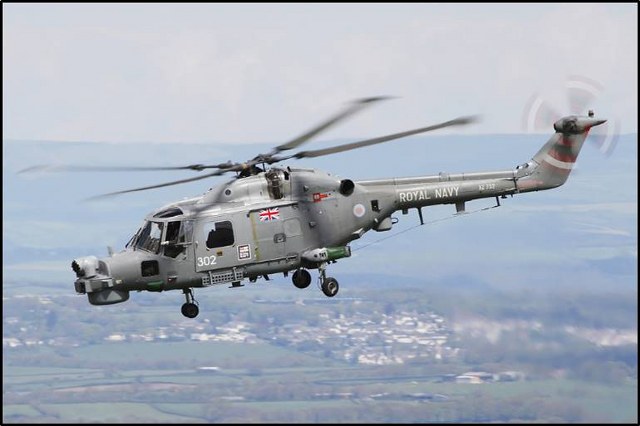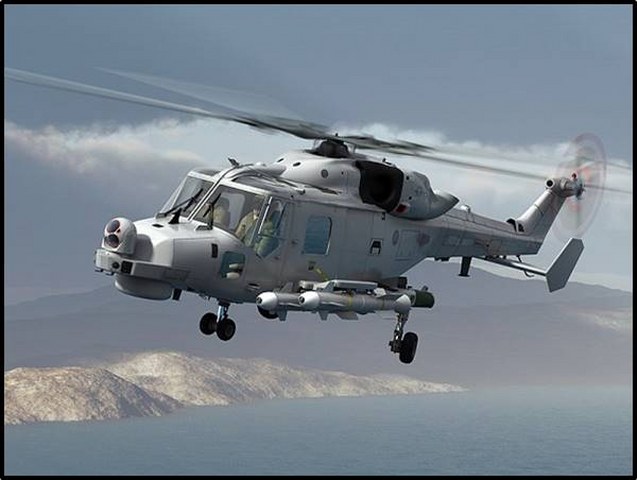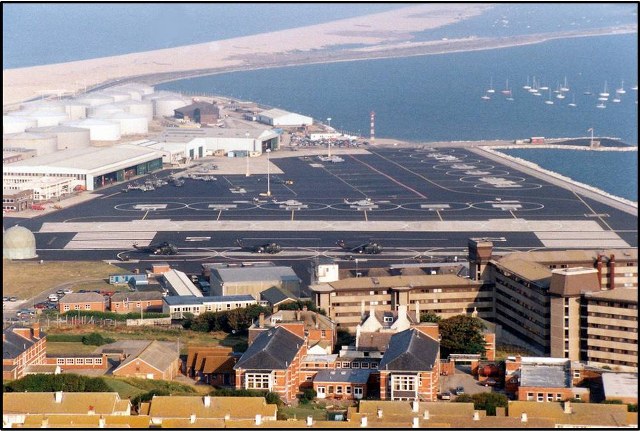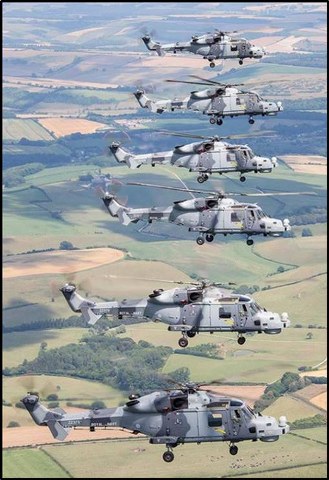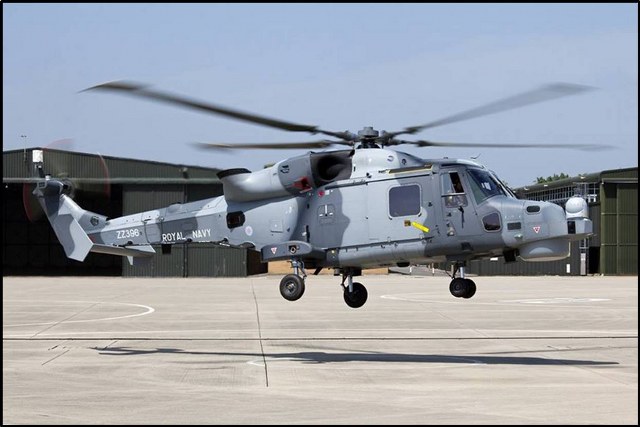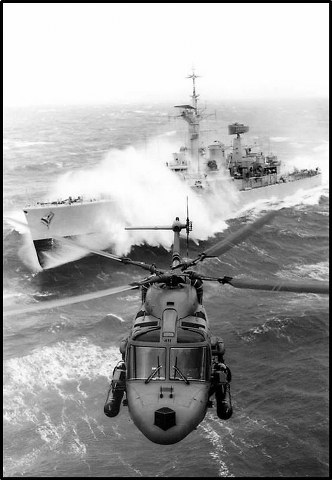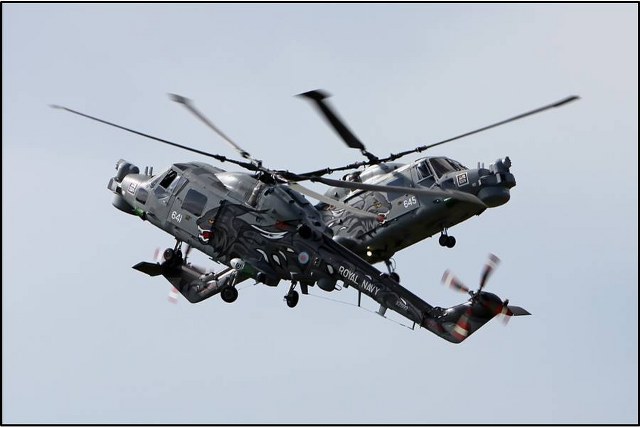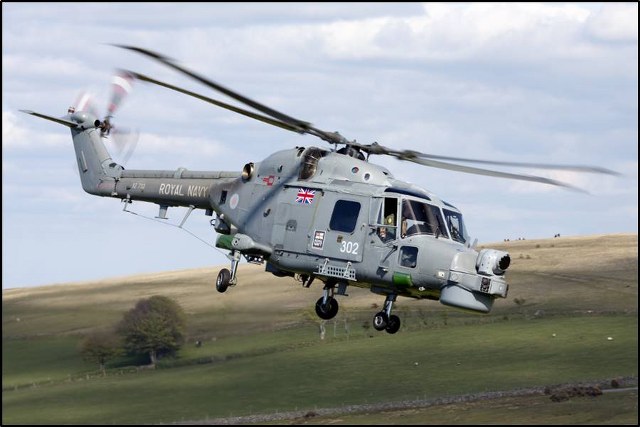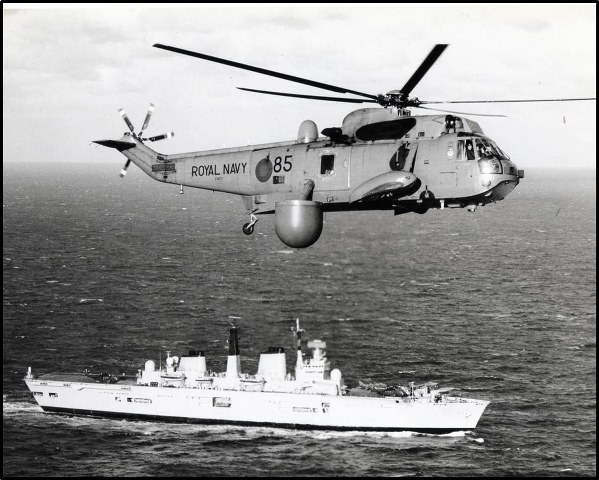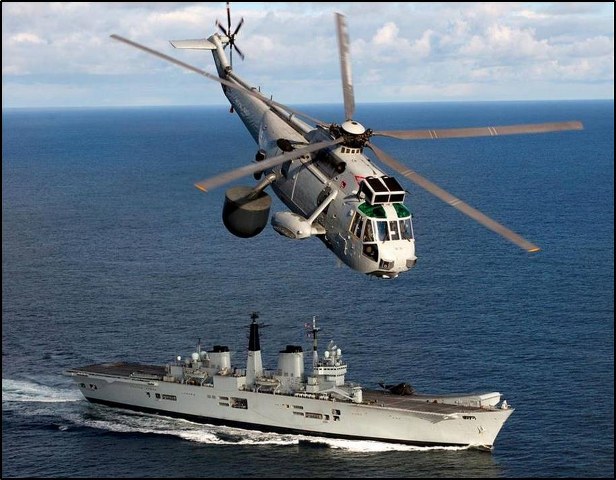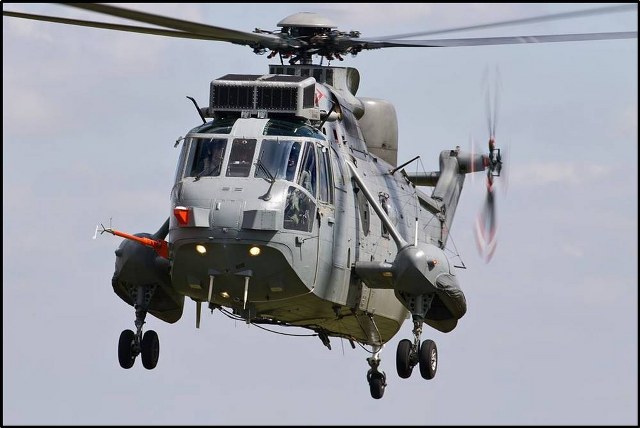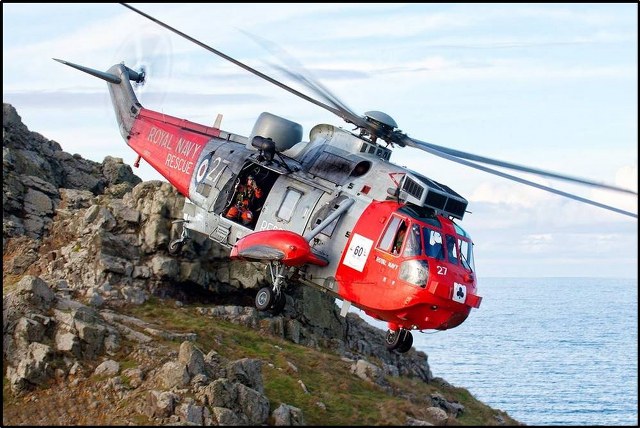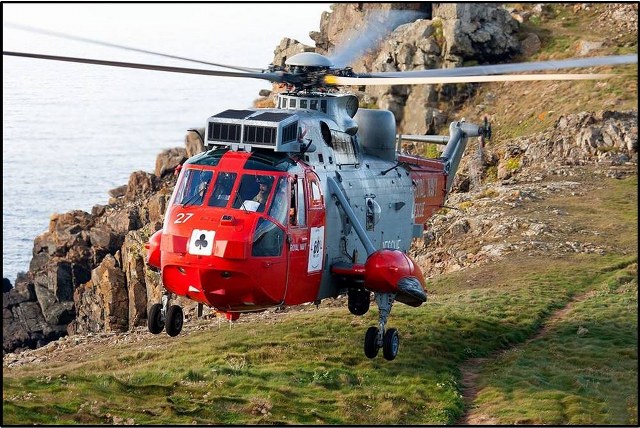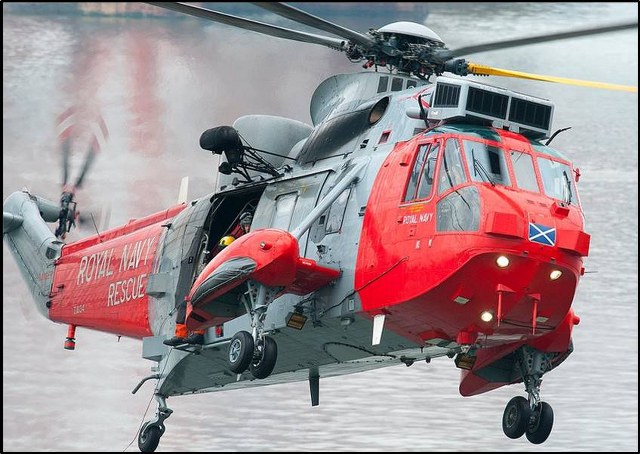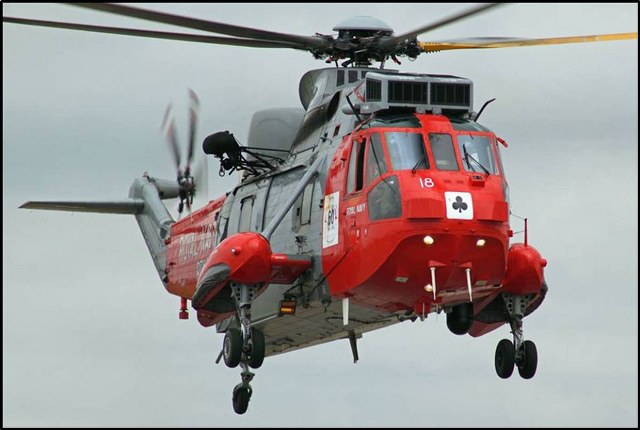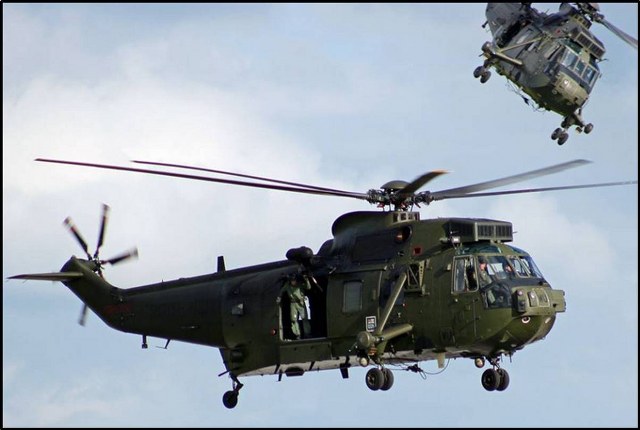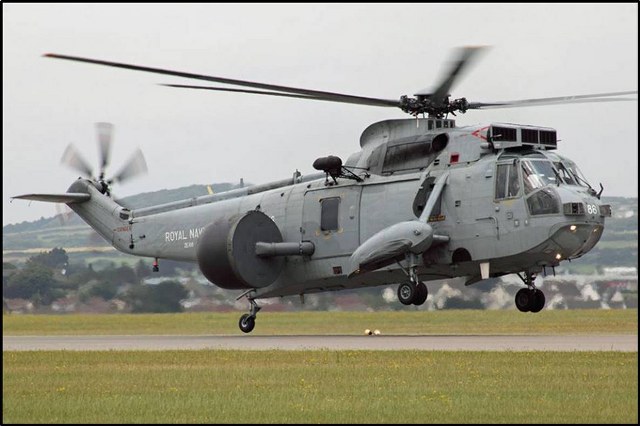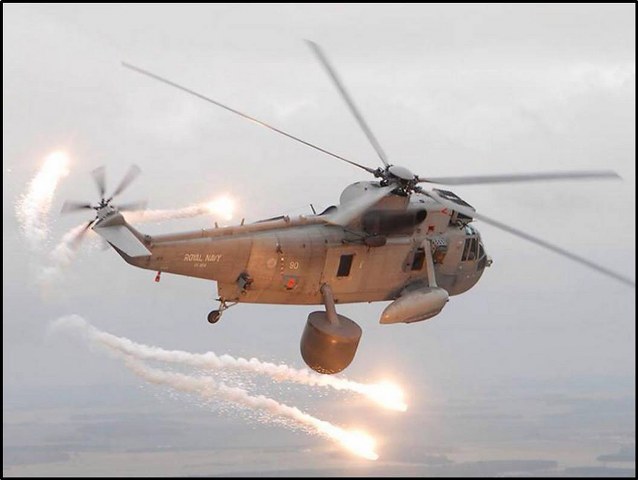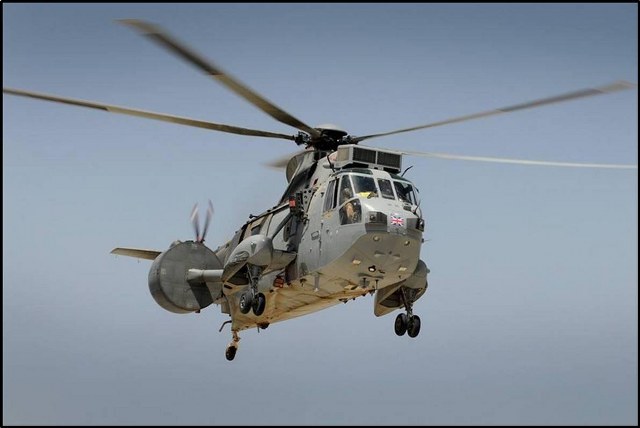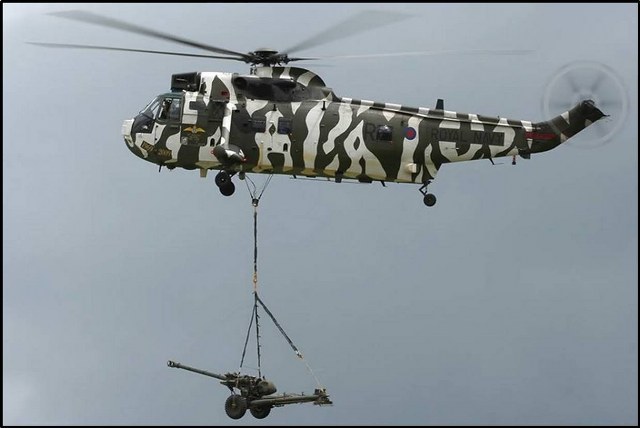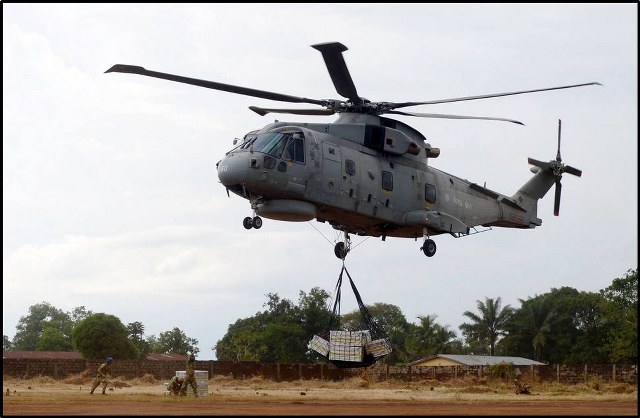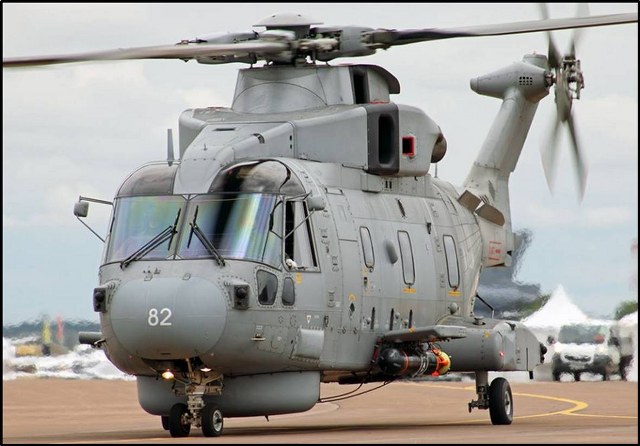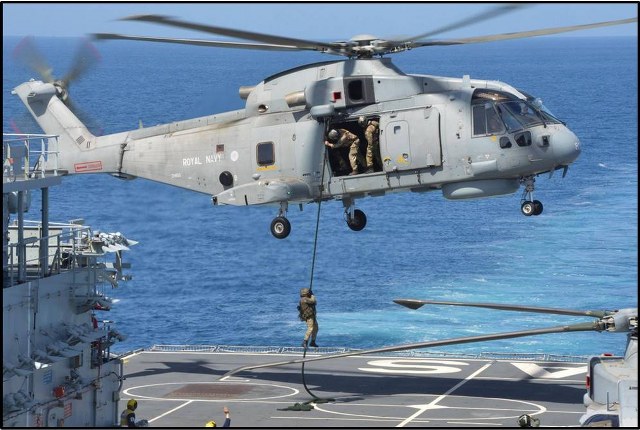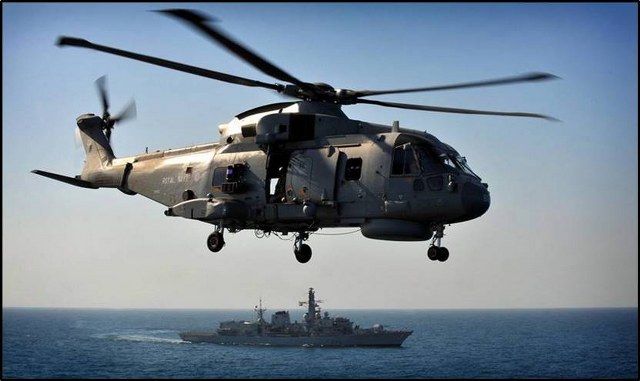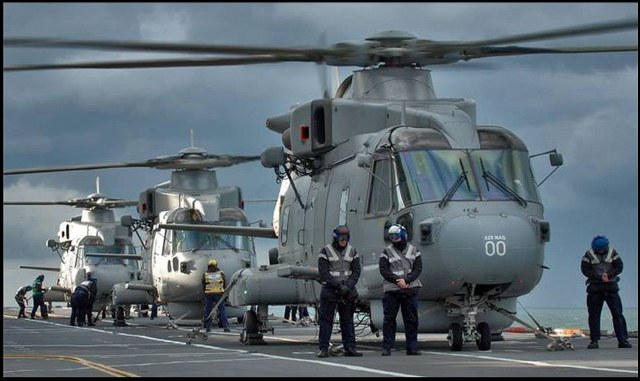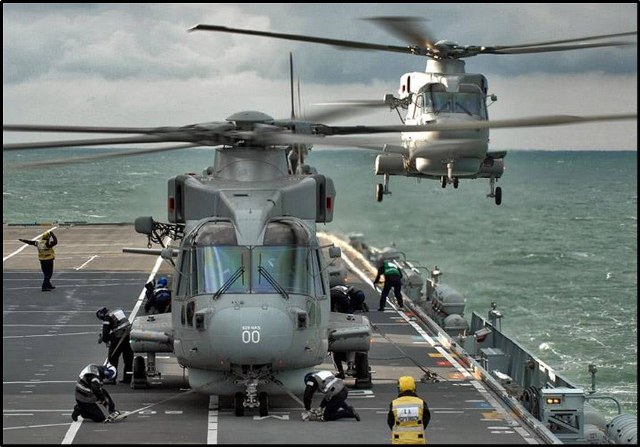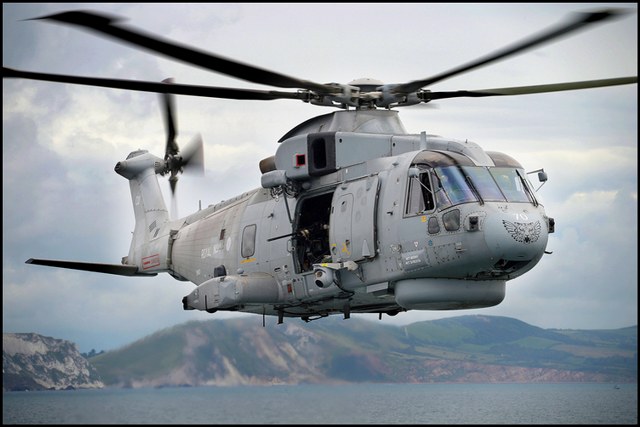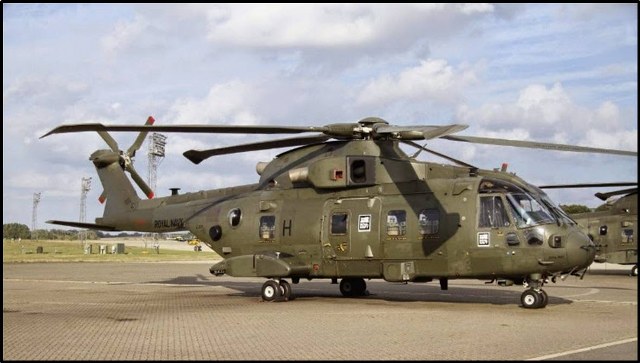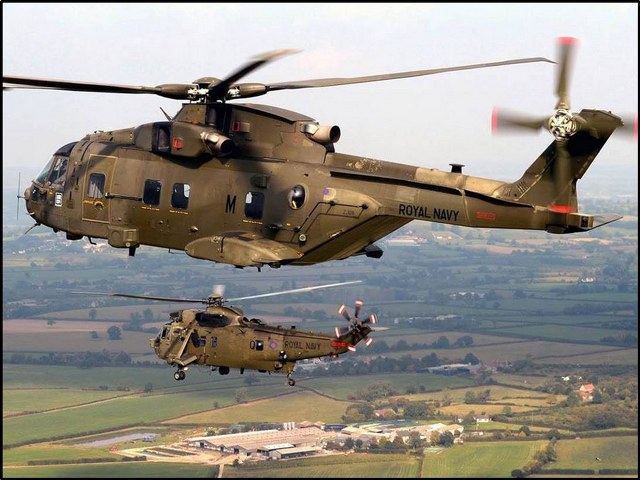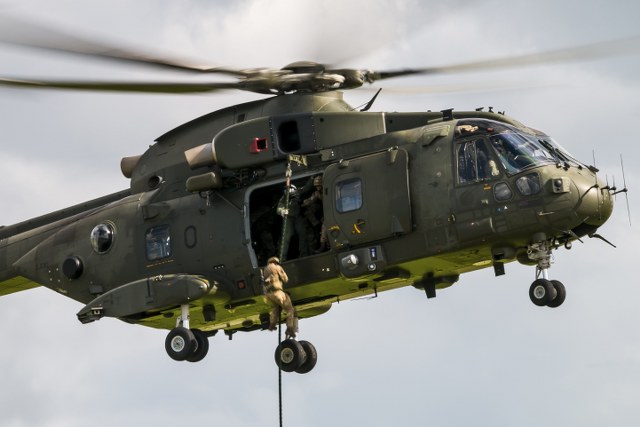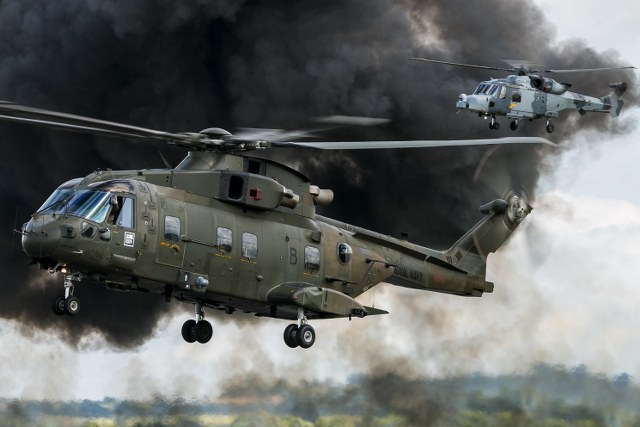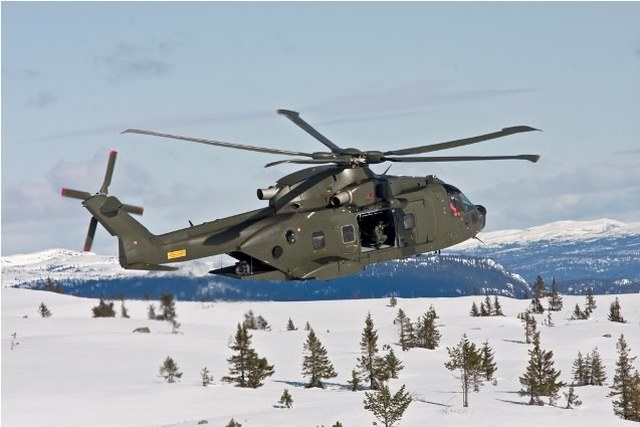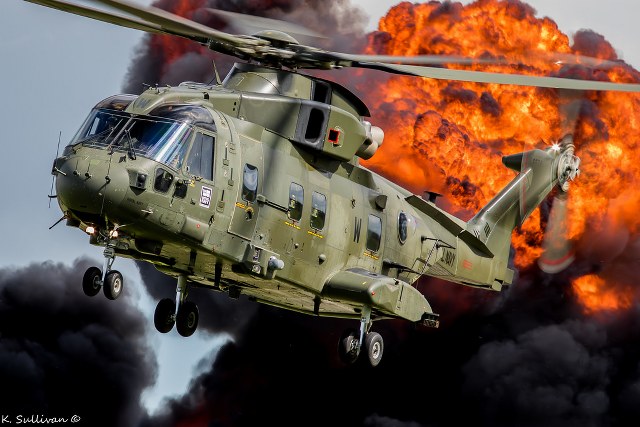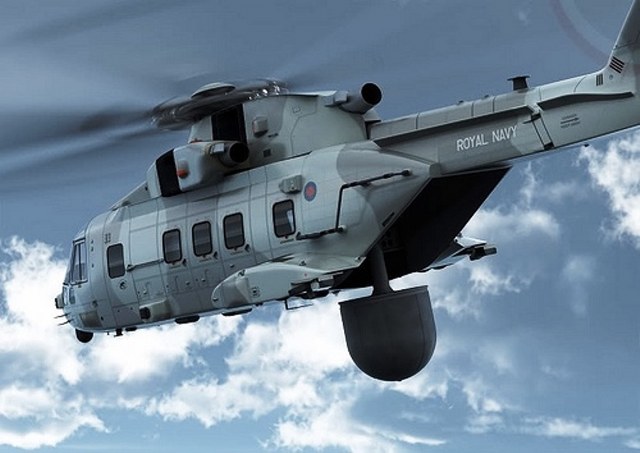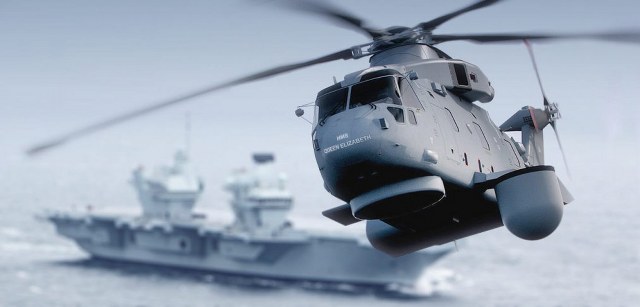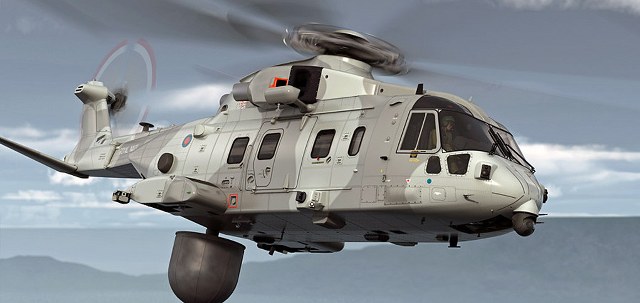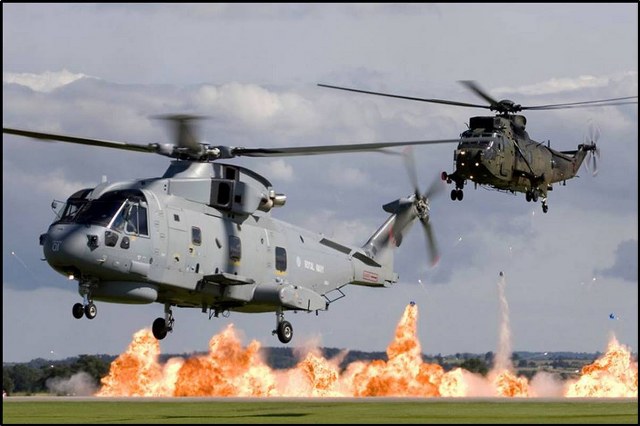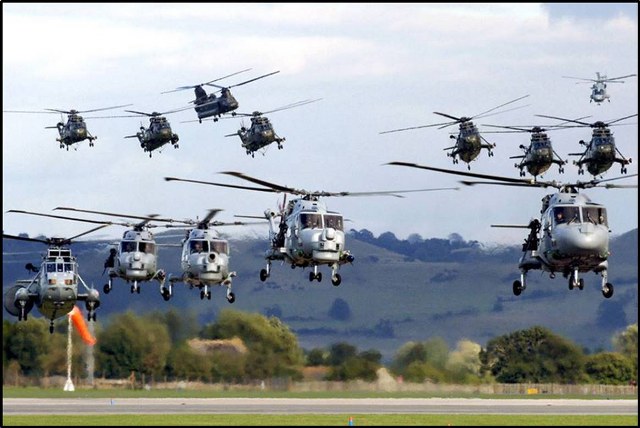Helicopers of the Royal Navy
History of Helicopters in the Fleet Air Arm
Originally formed as the Royal Naval Air Service in 1910,
Naval Aviation had a slow beginning. An order was placed for His Majesty’s Airship No.1 in 1909, however it was not until 1911 that a first flight was attempted… during which the airship broke her back. One the Isle of Sheppey four officers were being taught how to fly by members of the Royal Aero Club (a few others were undergoing tuition at their own expense) however Lt Charles Samson RN, two other naval officers and an officer in the Royal Marines qualified in May 1911. About that same time the British Army created the Air Battalion at Farnborough. That autumn the Naval Flying School was created, and opened its doors on land at Eastchurch now owned by the Admiralty to further students. In the Spring 1912, the Air Battalion became Military Wing the Royal Flying Corps and, shortly afterwards a Naval Wing was created (with Samson, now a Cdr, in Command).
It was not until July 1914 that Naval Wing broke away from Military Wing and gave itself the name the Royal Naval Air Service. The RNAS and RFC never really saw eye-to-eye during WWI, and a decision was made, on the recommendation of Field Marshall Smutts to merge the two air arms and create an Independent Air Force in April 1918. The Air Ministry managed maritime aviation up until 1938… providing all the aircraft and a number of pilots. Naval officers who wished to fly were seconded to the Fleet Air Arm of the Royal Air Force (formed in 1924)… and held rank in both the RN and RAF (not always equal status!). In 1938 The Inskip Report recommended that naval aviation should be given back to the Admiralty, effected in 1939 and Naval Air Branch was established (the title Fleet air Arm was dropped and not used again, officially, until 1953… but the shortened version ‘Fleet Air Arm’ remained in common use.)
Since the 1970s, rotary wing aviation has eclipsed that of fixed wing with the Fleet Air Arm, following the major re-organisations announced in the UK 1957 Defence White Paper, which essentially retired the main carrier fleet, and the 1966 Defence White Paper which cancelled the replacement large strike carrier, CVA-01. The Fleet Air Arm provides maritime attack and combat air support for the fleet and its task groups. Anti-submarine, AEW, SAR and replenishment tasks are conducted plus helicopter assault and support for the Royal Marines, together with the comprehensive training necessary to complete these missions. Some training and other second line duties are carried out by civilian contractors or in joint civilian-military teams.
From 1 Oct 1999 the Commando Helicopter Force joined with the support and battlefield helicopters of the Army Air Corps and the Royal Air Force in the new Joint Helicopter Command (JHC). JHC is unified under Commander-in-Chief, Land. The RN contributes aircraft (plus about 1,000 personnel) from 845, 846, 847 and 848 Squadrons plus other aircraft from an attrition reserve. The FAA also contributes 705 Squadron to the tri-service Defence Helicopter Flying School.
The main FAA operational shore bases are HMS Heron (RNAS Yeovilton, tail code VL) and HMS Seahawk (RNAS Culdrose, tail code CU). A SAR detachment was based at Prestwick (HMS Gannet, tail code PW) in Scotland, until Mar 2016
.
Fleet Air Arm assets, bases and personnel are the responsibility of Flag Officer, Naval Aviation (FONA).
-
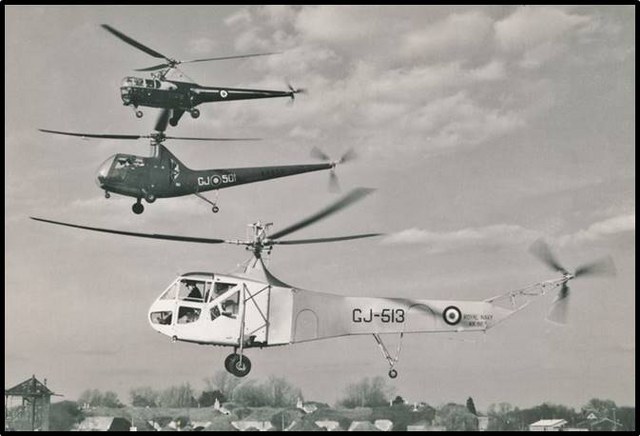
- Helicopters `at Siskin, late19 40`s Top to Bottom Dragonfly, Sikorsky R-6, Sikorsky R-4/ S47 (Gadfly)
-
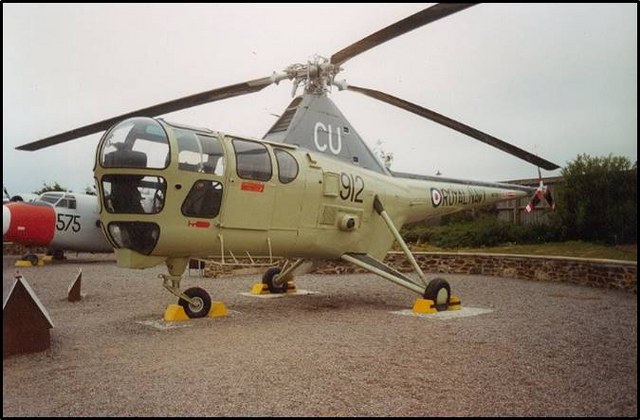
- Westland Dragonfly HR5 (WS-51) Making a rare appearance outdoors at the 2000 RNAS Yeovilton Airshow, Westland Dragonfly HR.5 VZ595 looks to have been newly restored. She is the oldest preserved Dragonfly in the UK.
-
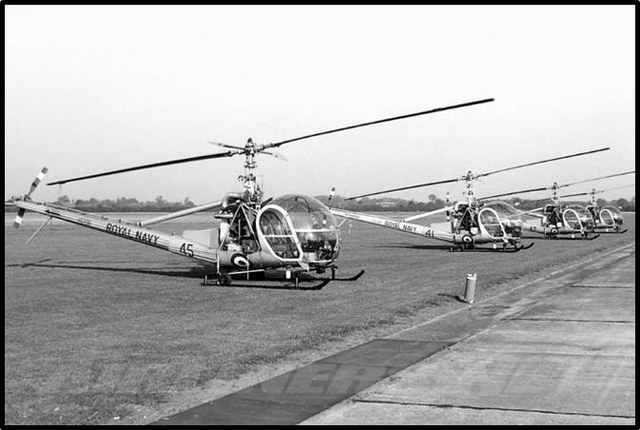
- Hiller UH-12E A quartet of Hiller UH-12’s of the Royal Navy making a fuel stop at Eelde. Delivered by sea to RNAY Fleetlands. These Hillers were built as three-seat dual-control light utility and observation helicopters and were used in the Navy as training aircraft.
-
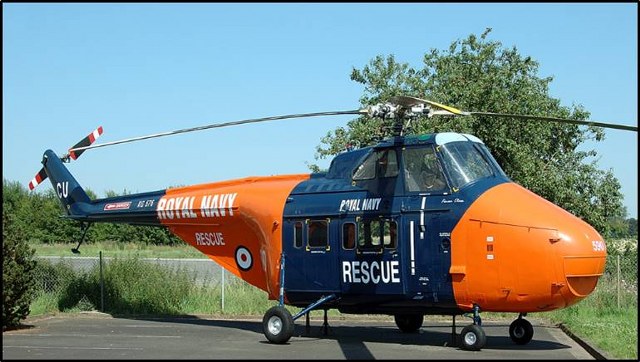
- Westland WS-55 Whirlwind 3 Freshly painted in Royal Navy colours and named named “Princess Olivia”. Ex Bristow Helicopters G-AYNP. Originally delivered to the Royal Navy as XG576 in 1955.
-
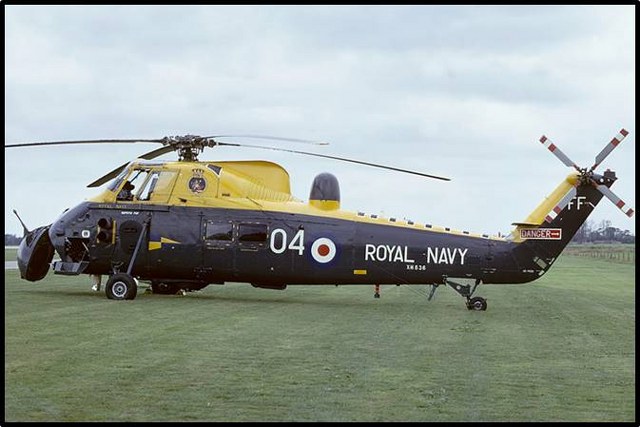
- Westland Wessex HAS3 XM836 / FF-04 Of 737 Naval Air Squadron ship based on the County Class Destroyer HMS Fife.
-
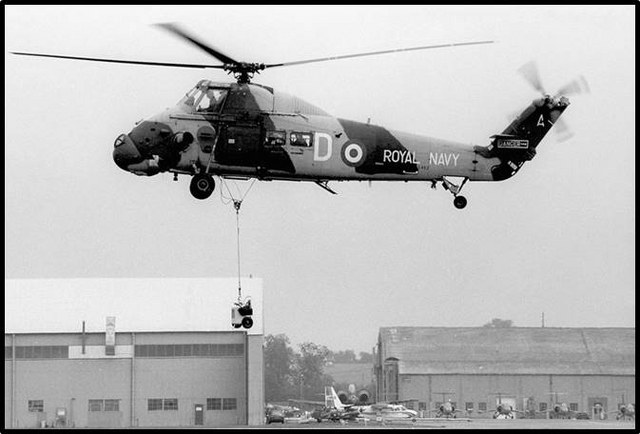
- Westland Wessex HU5 Seen with an underslung load as a carrying demonstration at RAF Fairford. Note the Starfighters and A-10 on the ramp in the background
-
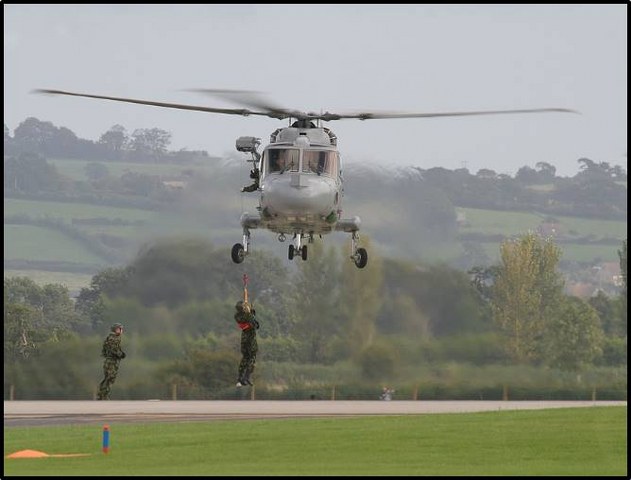
- Westland WG-13 Lynx HAS3S This Royal Navy Lynx seen picking up some Marines during the Commando Assault demo, check the guy not on the rope leaning into the downdraft
-
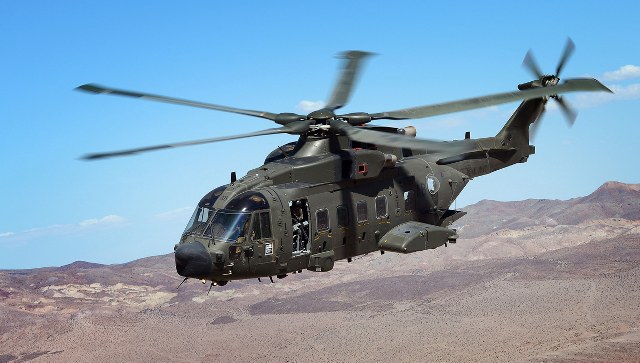
- Joint Helicopter Command (JHC) personnel from 845 Naval Air Squadron and 27 Squadron Royal Air Force have been providing aviation support to more than 1000 Royal Marines and Royal Marines Reservists currently taking part in Exercise Black Alligator (EX BA15). Played out on the huge training areas of the United States Marine Corps Air Ground Combat Center in California’s Mojave Desert EX BA15 also includes Marines from the Dutch and United States armed forces. Photograph shows a 845 Naval Air Squadron Merlin MK3A helicopter flying over the training areas of the United States Marine Corps Air Ground Combat Center in California’s Mojave Desert during Exercise Black Alligator 2015.
-
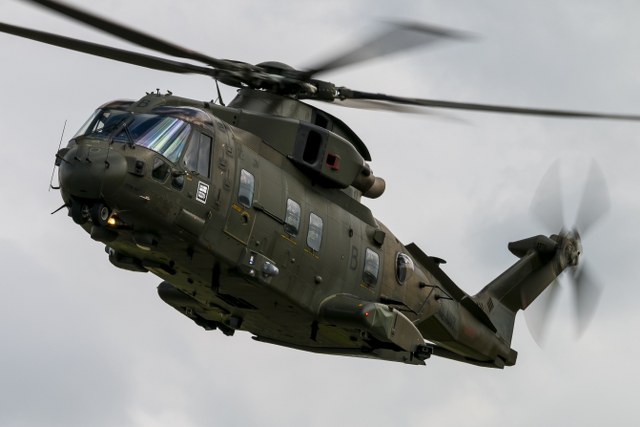
- Commando Helicopter Force (CHF) based at RNAS Yeovilton currently consists of three Naval Air Squadrons; 845, 846 and 847 NAS. The Naval Air Squadrons of CHF are integrated under the command of a Headquarters, established to operate helicopters afloat or ashore in support of the UK armed forces. It is a combined Royal Navy and Royal Marine force that flies Sea King and Lynx helicopters that specialises in amphibious warfare.
-
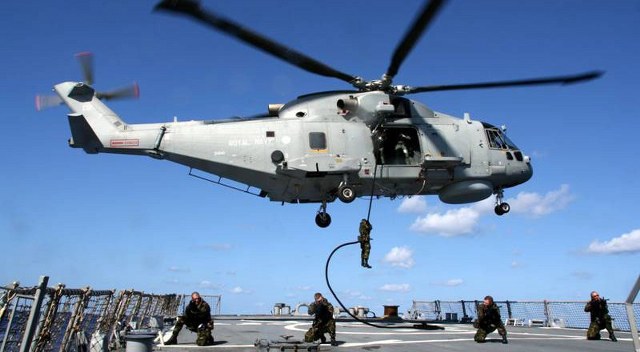
- USS Fitzgerald, At sea (Sept. 8, 2007) – A visit, board, search and seizure (VBSS) team from HMS Monmouth (F-235) performs a fast-rope insertion on the flight deck of USS Fitzgerald (DDG 62) via Monmouths Merlin helicopter. Fitzgerald and Monmouth conducted a Passing Exercise (PASSEX) off Okinawa on 7-8 September 2007. U.S. Navy photo by Boatswain’s Mate 2nd Class (SW) Alexis M. Diaz.
